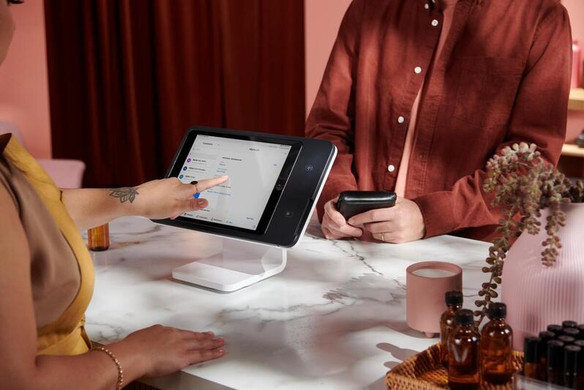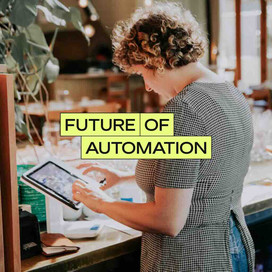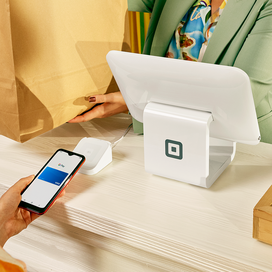Table of contents
Automation solutions can unlock a lot of operational efficiencies, speed up manual workflows, and help employees recapture their time. So it’s no surprise that savvy retailers are embracing business automation tools that better serve both their customers and themselves.
Retailers who are newer to automation may worry that their brand will become impersonal with its adoption, and as a result, the customer experience will be degraded. But it’s clear that customers actually prefer automation for certain interactions. According to the Square Future of Retail report, 75% of consumers reported that automation technology wouldn’t deter them from shopping with a retailer. In fact, 23% said that modernization would make them more likely to shop there.
Luckily, strategically integrating automation into your business can be pain-free thanks to advancements in technology.
Where to integrate automation within your retail business
The wrong automation technology can burden businesses of all sizes — especially when it comes to staff training. Starting with intuitive automation tools that are already available and integrated within your Square Retail POS and software may make the transition easier for everyone involved.
Interestingly, different generations of business owners prioritize different tasks for automation in order to streamline their employees’ time and better serve customers, according to the Square Future of Retail report.
| Gen Z | Millennials | Gen X | Baby Boomers | |
| Payroll and benefits | 40% | 38% | 42% | 31% |
| Order tracking | 33% | 36% | 41% | 38% |
| Inventory management | 35% | 37% | 35% | 32% |
| Customer communication | 34% | 35% | 31% | 45% |
| Automated email marketing | 26% | 36% | 33% | 31% |
| Customer loyalty programs | 38% | 32% |
30% |
39% |
| Invoicing | 23% | 32% | 38% | 22% |
| Checkout | 36% | 33% | 28% | 23% |
When it comes to prioritizing areas of your business to automate, consider which tasks take up the bulk of employees’ time to manually execute or which areas are more prone to human error.
Leveraging automation for inventory management
For most retailers, inventory management is a constant pain point with many layers of complexity. If done well, it can grow revenue and improve profit margins. If done poorly, it can result in costly, misinformed purchasing mistakes and lost sales. And inventory management can be very time-consuming for retailers with complex product mixes who are selling in person, online, and across multiple channels.
We chose an automated system that would connect our physical and online stores and save us time manually adjusting stock. Being able to do this across multiple devices for different team members is so beneficial.”
Alexandra Marcher → Manager, Leamington Wine Company
That’s why inventory management is usually a good place start with automation.
Here are a few inventory areas to consider streamlining:
- Merchandising setup and grooming: Editing SKUs can be a manual and time-consuming task. By using bulk update and automation tools, retailers can edit hundreds of items and variations at once, including custom attributes, all from their retail POS app. Retailers can also automatically create new items just by scanning the barcode and skipping the manual entry.
- Real-time data to inform insights: Accurate and frequent inventory counting is critical for retailers to account for sales, theft, loss, or incorrectly placed items and to avoid selling items that are not in stock and stockouts. Using Square for Retail, it’s easy to perform cycle counts and full inventory counts from an iPad or iPhone on the go using only the built-in camera, making it possible to perform cycle counts more frequently. Multiple staff members can contribute to a count at one time, and data will sync across multiple locations in your POS.
- Insights to drive action: Square for Retail also provides alerts for when an item’s stock gets low. Daily emails are sent identifying products running low on inventory, and the inventory sell-through report projects sales trends so you can stay ahead of low inventory. Automatic purchase orders can be sent to vendors when it’s time to replenish stock — so a sale is never missed.
For retailers who are just getting started, AI-powered starter product library suggestions, like the Square auto-generate library, can help set up product catalogs in just a few clicks. The best part? AI can even generate product descriptions, so employees don’t need to write each one from scratch.
The Square auto-generated product descriptions feature has completely transformed my business. We’re already expanding our inventory for the upcoming holiday rush, and now I have the ability to draft far more engaging content for my customers in half the time.”
Randy Fulk → Co-Founder, Big Bows & Sassy Clothes
Automation to improve customer connections
Most retailers are hyper-focused on marketing but may feel like they’re constantly in “catch-up” mode. The retail landscape is more saturated than ever before, and that means retailers are required to reach their audience more frequently and with targeted messaging that resonates with their audience.
The good news? Despite what respectful marketers may assume, 86% of consumers actually want to communicate with the businesses they frequent, according to the Square Future of Retail report. The problem is, retailers don’t always have time to create personalized messages for their customers at the frequency required.
That’s where automation and even AI can lend a helping hand. Retailers can create email and SMS campaigns that are triggered by specific customer actions, keeping their brand top of mind when it matters most. Plus, technology solutions like Square offer an integration with ChatGPT to generate personalized email copy in order to expedite the copywriting process.
Automation and technology can create efficiencies and free up time so employees can spend it on the most impactful tasks for the business. By using automation tools that help your brand connect with customers, you’re already one step ahead of the competition.
![]()













